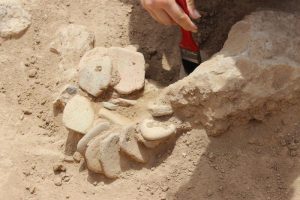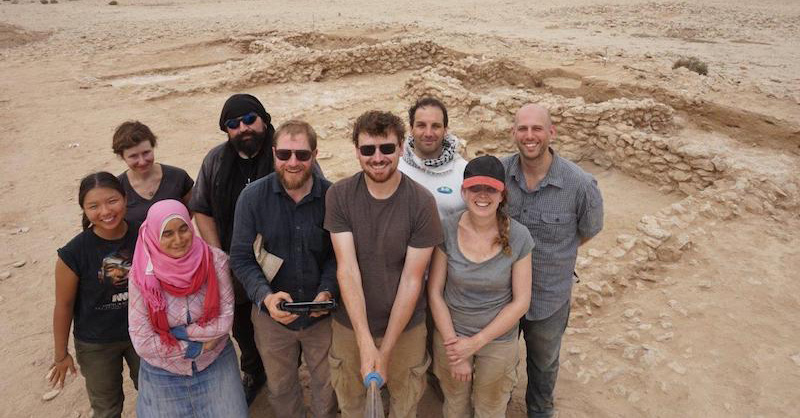Qatar Museums (QM) and UCL Qatar have recently unearthed the earliest Islamic period site in Qatar and one of the earliest in the region, in a monumental discovery in the northwest of the country.
Researchers have identified that the settlement dates to the later Sassanian period, between 538 and 670 CE. The architectural features still in place today can be traced back to the Umayyad period of 661 – 750 CE.
 The excavation came as part of a joint project between QM and UCL Qatar, called Crowded Desert. For the past three years, the project has centred around the archeological study of Meleiha and Umm al Ma’, near Zubarah.
The excavation came as part of a joint project between QM and UCL Qatar, called Crowded Desert. For the past three years, the project has centred around the archeological study of Meleiha and Umm al Ma’, near Zubarah.
It was at the excavation of Yoghbi, however, that the team, led by Dr José Carvajal López of UCL Qatar, uncovered Qatar’s earliest Islamic period settlement. Amongst the items found were ceramics which dates back between the 7th and 8th centuries, and fragments of glass, metals, stone vessels and fishing tools from the early Islamic period.
The discoveries at Yoghbi are significant because they counter previous academic belief that the occupation of the Gulf in the early Islamic period is linked to the peak of trade in the Indian Ocean, brought about by the founding and establishment of Baghdad in 762 CE and Siraf, around 800 CE.
Speaking on the importance of the project, QM Director of Archaeology Faisal Al Naimi said the joint Crowded Desert project is aimed at enriching knowledge and understanding of the nomads and sedentary people who lived in the area, and their relationship with other distant places in the Gulf.
This information helps us paint a better picture of the great historical themes prevalent in the Middle East, such as the early civilisations, the Islamization of the region and the Gulf’s long-distance connectivity with the Indian Ocean and the rest of the Middle East.’
Dr Carvajal López said the results of the Crowded Desert Project, and in particular those of the excavation of Yoghbi, were completely unexpected.
They opened our eyes to the rich treasure of knowledge that lays still buried in Qatar and in other countries of the Gulf.’
Carvajal López added that while this truly remarkable heritage belongs to the history of Qatar and of the Gulf, its significance goes beyond that of national and regional interests, because it can potentially change perception of the early history of Muslims.
The information gathered by researchers at areas such as Meleiha and Yoghbi will allow experts to reconstruct the contribution made by the Bedouins of Qatar to the great historical themes of the Gulf region, including the development of early civilisations, the Islamization of Arabia and the Gulf, and Qatar’s connectivity with the rest of the Indian Ocean and the Middle East.
Discussing the importance of the site findings, Dr Rob Carter of UCL Qatar said Qatar’s archaeological record already includes one of the oldest mosques known in the Arabian Peninsula – a 9th century example excavated by a French team at Murwab – and these excavations have pushed back the occupation of the area to the 6th – 8th centuries. At this time, there was a well-attested Christian presence in the region, so the discoveries at Yoghbi have the potential to shed light on this critical moment of religious change.
Crowded Desert is an ambitious programme aimed at producing a deeper knowledge of the human presence in the Qatari desert. It is a central component in QM’s commitment to preserve and promote cultural heritage in Qatar.
Check out this link for updates and more information on the Crowded Desert project.









